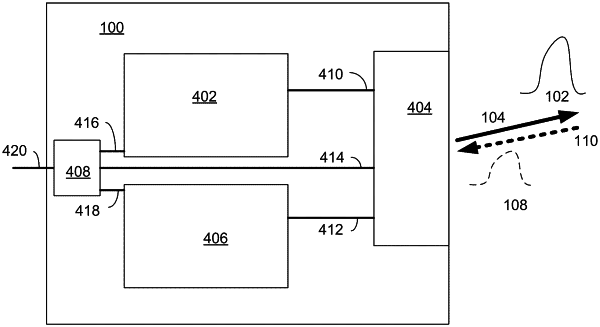| CPC G01S 7/4817 (2013.01) [G01S 7/484 (2013.01); G01S 7/487 (2013.01); G01S 7/4818 (2013.01); G01S 7/4865 (2013.01); G01S 17/10 (2013.01); G01S 17/89 (2013.01)] | 18 Claims |

|
1. A light detection and ranging (LiDAR) system comprising:
a mirror configured to scan a first plurality of pulse signals and a second plurality of pulse signals along a first direction;
a rotatable polygon having a plurality of reflective sides including a first reflective side;
a first light source configured to guide a first pulse signal of the first plurality of pulse signals to the first reflective side of the rotatable polygon via the mirror along a first path, the first pulse signal having a first incident angle on the first reflective side and having a first wavelength; and
a second light source configured to guide a second pulse signal of the second plurality of pulse signals to the first reflective side of the rotatable polygon via the mirror along a second path, the second pulse signal having a second incident angle on the first reflective side and having a second wavelength, wherein the first path and the second path both intersect with the first reflective side of the rotation polygon substantially simultaneously,
wherein the first pulse signal of the first plurality of pulse signals has a higher power than the second pulse signal of the second plurality of pulse signals, and the rotatable polygon is configured to scan a first range with the first pulse signal, and scan a second range with the second pulse signal, the first range being longer than the second range.
|